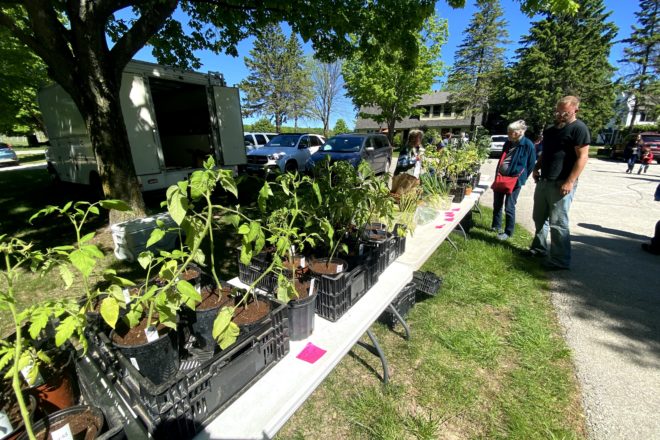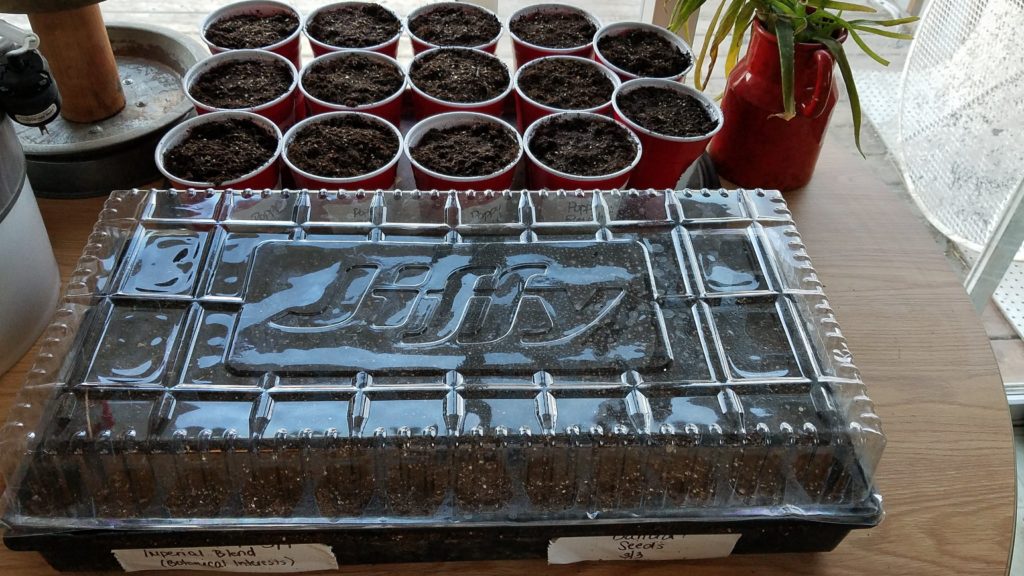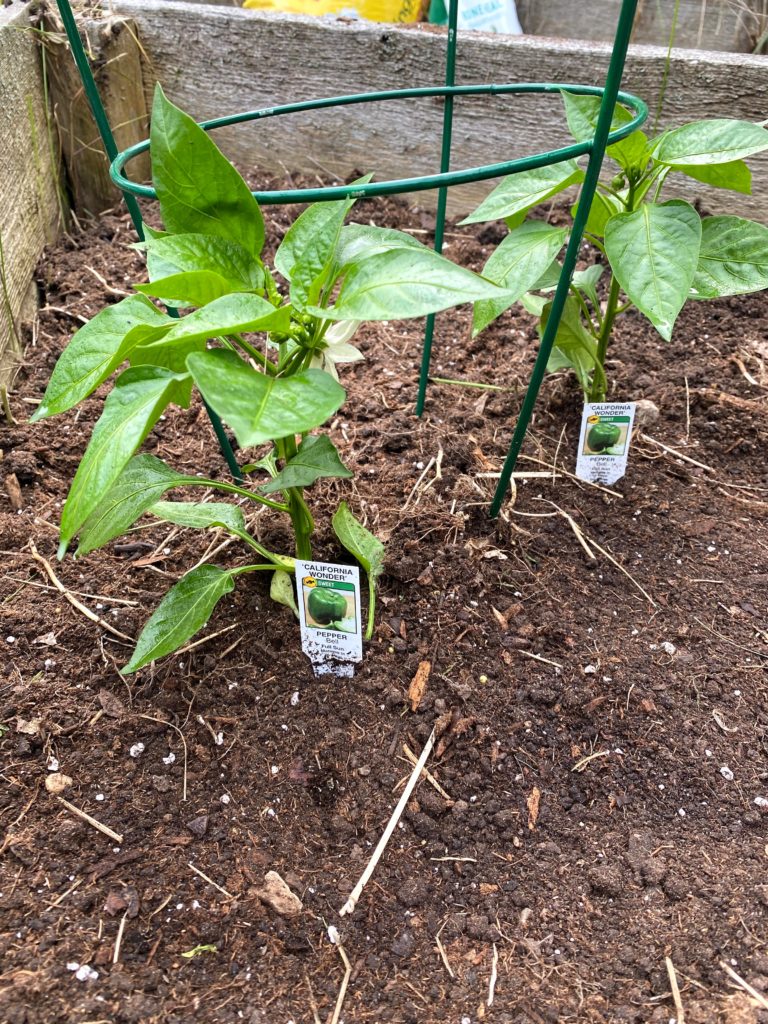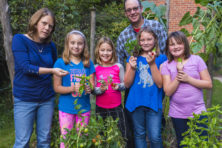Ready, Set, Grow: Planting a Kitchen Garden
- Share
- Tweet
- Pin
- Share

Whether your goal is to eat more healthfully, save some money or learn a new skill, a kitchen garden can accomplish all of the above. But first, how does a kitchen garden differ from a vegetable garden?
Generally speaking, a kitchen garden is located somewhere in your yard, as close to your kitchen as possible so that you can easily and readily harvest from it as you cook.
A vegetable garden, on the other hand, is usually farther from your house because of the additional space that’s needed to grow a larger variety and quantity of produce. For many first-time gardeners, that makes the kitchen garden a more approachable and manageable option.
Deciding What to Plant
When it comes to what to plant in a kitchen garden, master gardener Nancy Goldberg offered this advice.
“The first and most important thing is figure out what you like to eat,” said Goldberg, who, when her children were young, would include them in the yearly project by having them select something they wanted to grow.
“My daughter always wanted brussels sprouts; my son wanted peppers; and my husband loved onions,” Goldberg said. “So we grew all of those, and when I brought things in from the garden, they were always so excited.”
And although it’s perfectly acceptable – and fun – to experiment with one or two new items each season, you’re more likely to use produce that you already like to eat and know how to prepare.
“That way you get the most enjoyment out of it,” Goldberg said.
Just be careful not to include too much variety.
“You can really get by with just a couple of plants of whatever it is you want to grow,” Goldberg said, especially when it comes to tomatoes, squash and cucumbers.
“Squash and cucumbers are very prolific. Depending on the size of your family, you may only need one hill with three squash or cucumber plants,” said Goldberg, who suggests planting in threes. “For lettuce, spinach, kale and herbs, maybe three to five plants because as long as you are cutting them, you’re going to continue to get more.”

Location, Location, Location
Equally important as planning what to plant is where to plant it. Renee Carroll White is an avid gardener who has planted many vegetable and flower gardens, but this year, she’s using the early part of the spring to become more familiar with her new property before she plants anything.
“I have been getting a feel, a lay of the land, watching where the sun spends the most time on my proposed garden area,” she said. “The more sun, the better, and with the short growing season, I need to prepare as much as I can now.”
For White, that means using a combination of containers – pots, tubs, wooden boxes lined with landscape fabric – and an in-ground plot where she will be amending the soil. She also plans to make use of vertical space by incorporating two trellises.
“In the past, I had access to a watering system,” she said. “That would be nice, but sprinklers and a hose will be just fine for now.”
That, in part, is the beauty of a kitchen garden. It can be as fancy or basic as space, time and budget allow. For any gardener who’s starting out or starting over, White advised that they should “think big, start small.”
Starting with Seeds or Seedlings?
Whether it’s more advantageous to launch a kitchen garden from seeds – either started indoors or planted directly into the garden – or buy seedlings already started in a greenhouse, the answer is, “It depends.”
“Particularly if you’re a new gardener, until you feel really confident, I would choose seeds you can sow into the garden,” Goldberg suggested.
When to plant those seeds varies by crop. Seeds for “cool-season” crops will germinate in cool soil and are often planted in the spring so they’re ready to harvest before the temperature gets too warm. “Warm-season” crops, however, grow best only after the soil has warmed. If planted too early, the seeds may rot in the ground.
To get around that, some gardeners start seeds indoors to give the plants a head start.
“Sowing seeds in pots indoors allows you to get a jump on the growing season, but they may need to be attended to daily,” White said.
The cost of a seed-starting medium, trays and lights can add up, sometimes making seedlings from your local greenhouse, farmers market or plant sale a more convenient and cost-effective option, especially if you need only a few plants. Later this spring, the Door County Master Gardeners Association will once again host its plant sale after a two-year hiatus.
“One thing we’re focusing on – that you usually can’t find if you buy the plants at the store – is having a lot of different varieties,” White said.
At $3 per plant, the program also tries to make the plant sale an affordable option for all interested gardeners.

and use most often in your cooking for a good indication of what you might want to grow. Then grow only a few plants of each, keeping in mind that one tomato plant or one squash plant will produce several fruits. Photos by Grace Johnson.
For those who want to start their gardens from seed, the Door County Seed Library offers free vegetable, herb and flower seeds to community members. Since its launch in 2019, the seed library has distributed more than 25,000 packets of seeds.
“The Door County Seed Library has been an incredible source of knowledge and resources,” White said. “Starting from seed is not too hard, and it is truly amazing and fulfilling.”
Another way to cut initial seed costs is to swap or share seeds with friends, as well as save seeds from your plants at the end of the season. It’s also important to know which types of produce may not be worth the time, effort and cost to grow.
“Some vegetables are less expensive to buy from the store, so I will not waste my garden space,” White said.
Just be careful not to sow – or transplant – too soon.
“Gardening in Door County, sometimes it takes a while for our soil to warm up,” Goldberg said, who often waits until early June to add transplants into her garden. “Otherwise they will just sit there until the soil warms up. You need to watch the air temperature, but just as important is the soil temperature.”
Keep It Fun
The success of a kitchen garden depends on many factors, some of which, such as the weather, are out of the gardener’s control. But there’s one thing gardeners can control that makes all the difference, Goldberg said: “Most of all, have fun.”

